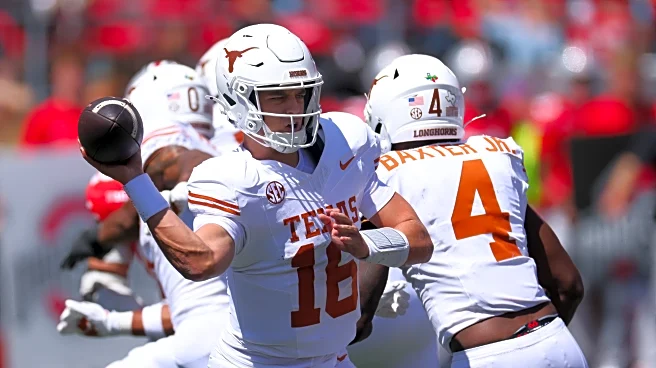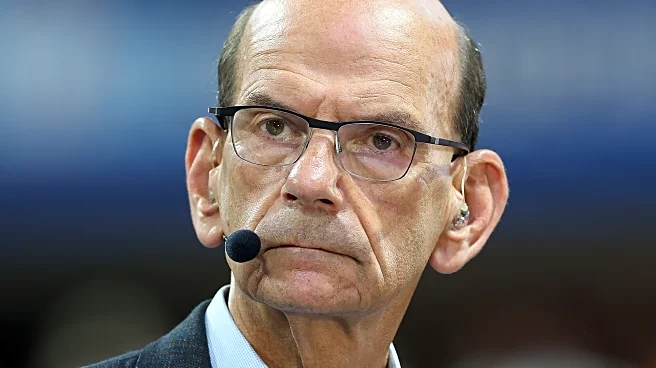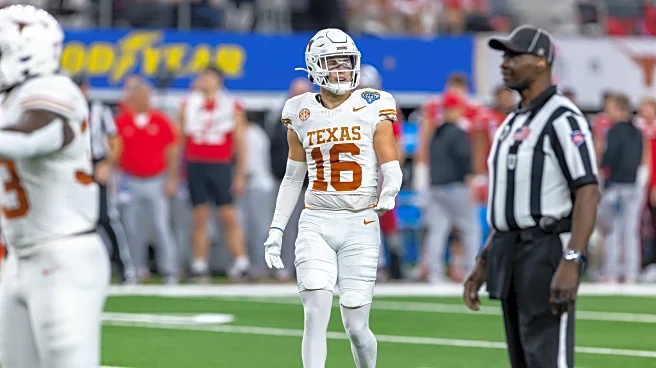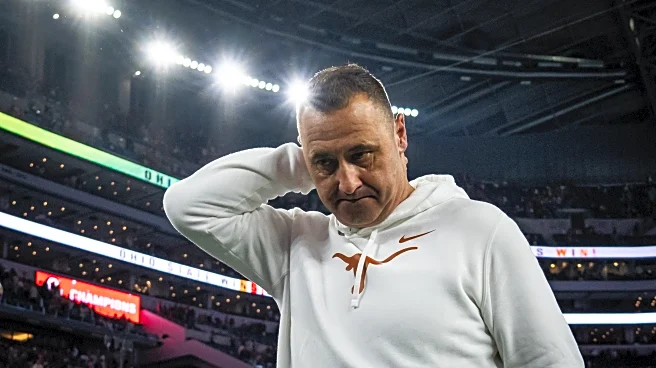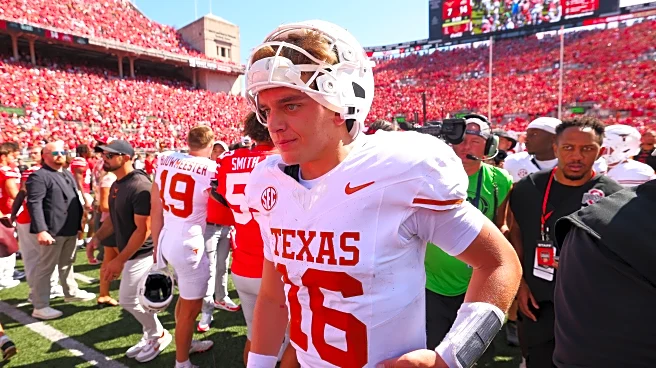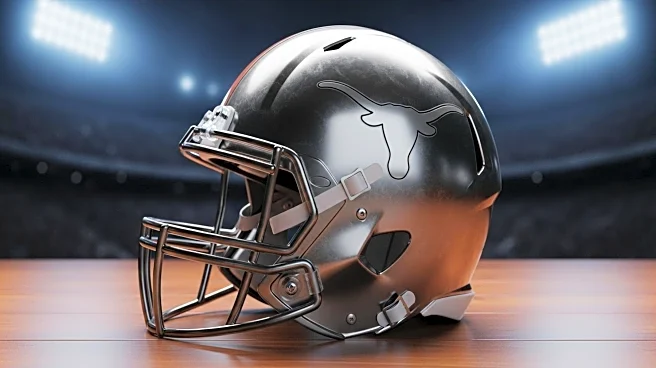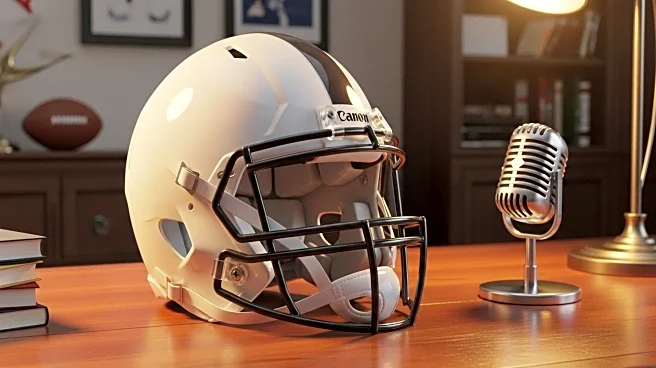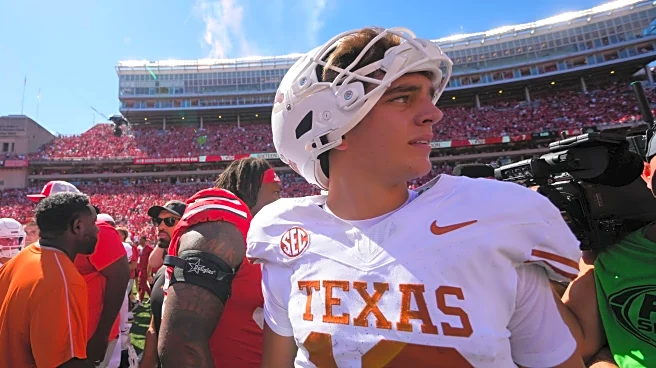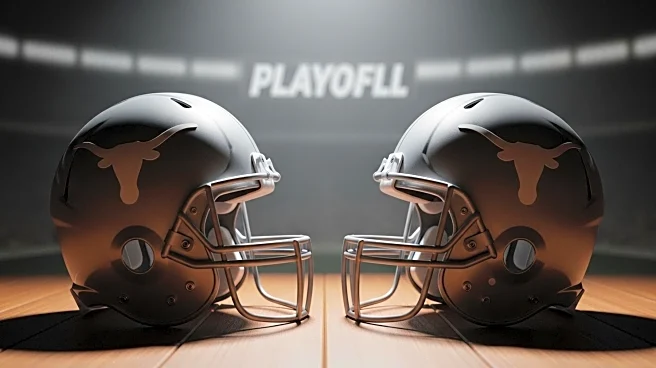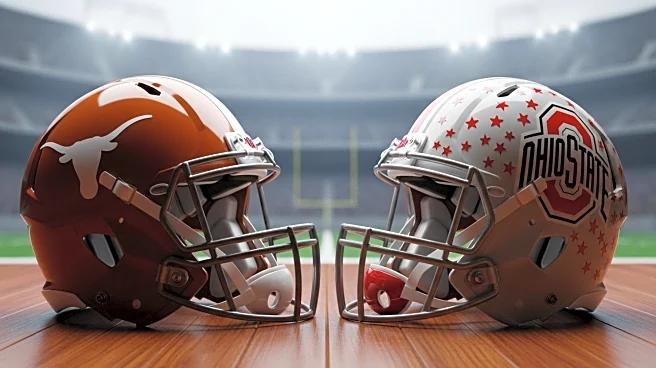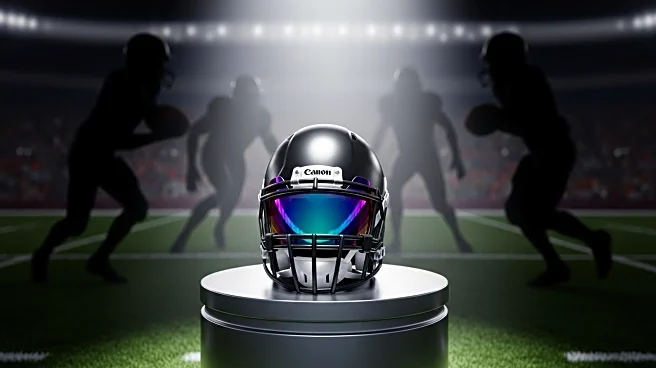
AUSTIN, Texas — The monumental matchup between the then-No. 1 Texas Longhorns and the then-No. 3 Ohio State Buckeyes in Columbus on Saturday started in a familiar way for redshirt sophomore quarterback Arch Manning.
In a reflection of last season’s opener against Colorado State in Austin when Manning made an appearance as the backup to Quinn Ewers, Texas head coach Steve Sarkisian dialed up a rollout for Manning to his right, producing a 40-yard completion to wide receiver Johntay Cook.
But the Horns
weren’t facing the overmatched Rams at Darrell K Royal-Texas Memorial Stadium and this wasn’t the same Manning.
So instead of delivering an easy strike on the run, Manning bounced the pass about five yards in front of junior wide receiver DeAndre Moore Jr., setting the stage for an uncomfortable 17-of-30 performance through the air for 170 yards, one touchdown, and one interception with a shocking off-target rate of 37 percent, according to ESPN, that was the most inaccurate single-game performance by a Longhorn quarterback in the last decade.
“I think one thing that happened a little bit to Arch is the game can mount on you, and you feel like, oh, man, we’re not scoring, or I missed the read, or I missed the throw. But in reality, the scoreboard still 0-0, and then the game can mount and you feel like you gotta make a play, but the scoreboard is 7-0, right?” Sarkisian said on Monday.
It was a necessary admission from the Texas head coach, who was more defensive of his first-year starter in the post-game press conference in saying that Manning didn’t lose his poise or composure during the game, a proclamation at odds with the on-field results.
Asked about Manning’s obvious mechanical deficiencies in the game, Sarkisian chose to address two critical crossing routes, both incomplete passes intended for sophomore wide receiver Ryan Wingo.
The first came on 3rd and 3 on the Ohio State 9-yard line near the end of a long drive in response to the Buckeyes taking a 14-0 lead early in the fourth quarter.
As Manning was quick to get the ball out before Wingo cleared the underneath defender, the Texas wide receiver hadn’t gotten his head around for the football when Manning fired it at Wingo’s knees.
The second came on 3rd and 5 at midfield as the Longhorns tried to mount a desperate comeback needing a touchdown to tie the game late.
Manning threw it high and behind Wingo on a sidearm pass with poor footwork.
“There were a couple times when we had some crossing routes where I didn’t feel like he brought his feet to where he wanted to throw the ball, which in turn forced kind of a little bit more on the sideline delivery, which isn’t his style of throwing. I think if he can get his feet aligned and get his shoulders aligned, that can help with some of his accuracy that way,” Sarkisian said.
If the problems on those throws ended with Manning’s feet, they started with his eyes — Sarkisian teaches his quarterbacks to read the underneath defender and then trust the wide receiver is going to come open in the appropriate window.
“I felt like he looked back for the crosser, which in turn brought his shoulders and feet, and then had to look back and forth with a little bit of an errant throw,” Sarkisian said.
The Texas head coach believes Manning simply needs to settle in to handle those situations better.
“Part of that is just finding that comfort level and trust with receivers in real games, right? Not in practice, not against the scout team, but in a real game against a good defense, because the windows get small against good defenses like that. So definitely lesson learned on that,” Sarkisian said.
It’s a satisfactory explanation for a snapshot of throws, but those are only two of the 11 throws by Manning deemed inaccurate by ESPN, a massive number for a quarterback whose subpar completion percentage last year was most influenced by his desire to force deep shots instead of taking higher-percentage check downs to stay ahead of the chains.
What happened on all those other throws that Sarkisian didn’t address that don’t have such a clear explanation mechanically?
“Arch clearly has a shoulder injury. They definitely aren’t disclosing it. He has zero power and has to put everything he can into it. Wouldn’t be shocked if he strained it in camp,” former Green Bay Packers quarterback Kurt Benkert wrote on Twitter.
Benkert continued his breakdown of Manning’s performance with an analysis of every pass attempt against Ohio State, regularly emphasizing the maximum effort the Texas quarterback needed to complete simple passes — which Benkert said looked like a shoulder injury he dealt with in college — and fundamental breakdowns like drifting into his left tackle on the first drive despite having a clean pocket.
The fundamental breakdowns kept happening when Manning dropped his eyes to the pass rush on a 3rd and 8 on a four verts call that had junior tight end Jack Endries on an underneath crosser for the outlet that Manning completely missed because his eye discipline collapsed even though he had a relatively clean pocket.
Another throw in the second quarter on 1st and 10 stood out — Manning tried to hit Moore again on a dig route, unaware of the hole defender in the middle of the field who was keying on the route instead of the quarterback’s eyes, fortunately for Manning, who once again bounced the throw with a labored delivery.
“Doesn’t feel good to watch. Probably doesn’t feel good to throw, either,” Benkert said.
Meanwhile, redshirt freshman wide receiver Parker Livingstone was coming into an open window between the squatting cornerback and the deep safety on the hash on a wheel route down the sideline. Manning never progressed past his read of Moore’s route.
Manning missed Livingstone again three plays later, instead forcing a post route to Wingo, who was covered by a deep safety absolutely squatting on that route and the cornerback dropping off Livingstone’s out route prior to Manning starting his delivery, which delivered a throw into double coverage.
“Texas will not be a dominant this year if Arch Manning plays how he did against Ohio State,” Benkert said.
Throughout the rest of the game, Manning threw an interception that was late and short of his landmark on the sideline, threw late and over middle on a ball that should have been intercepted, fell away on a throw that sailed high over the middle intended for Livingstone, rifled a ball over the middle intended for a running back that he looked like he threw with his eyes closed, and bounced a speed out at the feet of Endries on the final drive.
Benkert’s takeaway after Manning missed Wingo on the final crossing route put his performance into stark perspective.
“You’re never going to give your team a chance if that’s how you’re going to play.”
